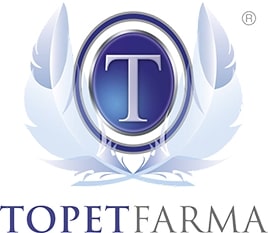






Product Ref: VBORN02 Category: Veterinary Prescription Medication


Royal Mail 2nd Class / Parcel Force 48
UK to UK :Normally arrives in 2-4 business days.
UK to Ireland :Normally arrives in 4-6 business days
UK to EU Countries : Normally arrives in 6-10 working days depending on where the parcel is going
Please note standered delivery is none trackable , none insured , no responsabily for lose or Damage
----------------------------------------------------------------------------------------------------------------

Royal Mail First Class / Parcel Force 24
UK to UK :Normally arrives in 1-2 business days.
UK to Ireland 3-4 business days
UK to EU Countries : Normally arrives in 6-10 working days depending on where the parcel is going
Please note :Trackable , Royal Mail insured up to £50.
--------------------------------------------------------------------------------------------------------
Parcel Force Express AM Guaranteed before Midday.
UK to UK only . UP to 5KG Max Weight
Arrives next day before 12 noon, requires a signature.
Parcel Forcel Terms & Conditions apply
Important: Parcel Force advise that there are some postcodes where an extended delivery time exists, and may affect the date of delivery or the service is not available.
| Category | POM-V |
| Temperature | Ambient |
| MA/VM/EU No: | 43564/4001 |
| Species |
|
| VMD Link | Product Information Database (defra.gov.uk) |
| NOAH Link | |
| Dosage | 4.9 Amounts to be administered and administration route Advice on correct administration The undiluted veterinary medicinal product is strongly alkaline and, therefore to avoid caustic effects, it is essential to dilute the product with at least 4 parts water prior to administration. In the case of smaller animals (weighing less than 500 g), it may be appropriate to dilute 0.1 ml of the neat product with >4 parts water and administer a proportion of the total volume. 10 ml bottle: A 1 ml syringe is provided with the 10 ml bottle for withdrawal of small volumes of the product and to facilitate dilution prior to administration. This syringe has dosage graduations of 0.01 and 0.1 ml. The lowest volume that has been demonstrated to be accurate is 0.1 ml. Therefore, for accuracy of dosing, it is recommended to draw up a minimum of 0.1 ml of product. 50 ml bottle: A 5 ml syringe is provided with the 50 ml bottles for withdrawal of product. The diluted solution should be mixed thoroughly prior to administration. Medicated drinking water should be freshly prepared and supplied immediately, preferably in a glass container, and replaced every 12 hours. Any medicated drinking water solution not consumed after 12 hours should be disposed of. The dilution prepared for direct administration should be made on a twice-daily basis immediately prior to provision , preferably in a glass container. This dilution should be administered immediately. Any unused solution should be disposed of immediately after use. After extracting and expressing the amount of veterinary medicinal product required the syringes should be washed with lukewarm water to remove any remaining product. The syringe can subsequently be used to prepare another solution or be opened, emptied and left to dry. Pet rabbits, rodents and reptiles For administration by oral gavage. Ornamental birds For administration via medicated drinking water or by oral gavage (crop needle). The uptake of medicated water depends on the clinical condition of the animals, the environment, the age and the kind of feed provided. In order to obtain the correct dosage, the concentration of enrofloxacin should be adjusted accordingly. In order to ensure consumption of the medicated water, animals should not have access to other water supplies whilst being treated. Dosage Never administer undiluted product. Ensure thorough mixing. Owing to physiological and pharmacokinetic differences between the wide range of species for which this veterinary medicinal product is indicated, the dose rates below are for guidance only. Depending upon the species of animal and the infection to be treated, alternative doses may be appropriate using an evidence-based approach. However, any change in dosing regimen should be based on a benefit-risk assessment by the responsible veterinarian, as tolerance at higher doses has not been investigated. To avoid inhalation of the medication, care should be taken with restraint of the animal and administration of the veterinary medicinal product. Rodents and pet rabbits 5 mg enrofloxacin per kg bodyweight (0.2 ml per kg bodyweight), twice daily for 7 days. Reptiles 5 mg enrofloxacin per kg bodyweight (0.2 ml per kg bodyweight), at 24-48 hour intervals for 6 days. Reptiles are ectothermic, relying on external heat sources to maintain their body temperature at the optimum level for correct function of all body systems. Metabolism of substances and activity of the immune system are, thus, critically dependant on the body temperature. Therefore, the veterinarian must be aware of correct temperature requirements of the respective reptile species and the hydration status of the individual patient. Furthermore, it has to be considered that large differences exist in the pharmacokinetic behaviour of enrofloxacin among different species, which additionally will influence the decision about the correct dosage of the veterinary medicinal product. Therefore, the recommendations made here can only be used as a starting point for individual dose setting. Ornamental birds 10 mg enrofloxacin per kg bodyweight (0.4 ml per kg bodyweight), twice daily for 7 days. Treatment should be re-evaluated if no improvement is seen. It is commonly advised to re-evaluate the treatment if no clinical improvement is observed within 3 days. 4.10 Overdose (symptoms, emergency procedures, antidotes), if necessary In cases of accidental overdose digestive tract disorders (e.g. vomiting, diarrhoea) and neurological disorders may occur. |
| Withdrawals | 4.11 Withdrawal period(s) Do not use in animals producing food intended for human consumption. |